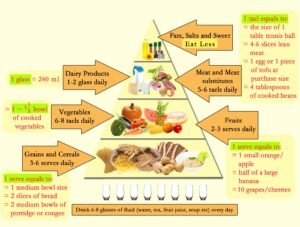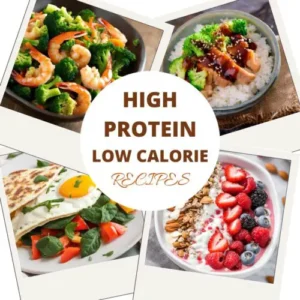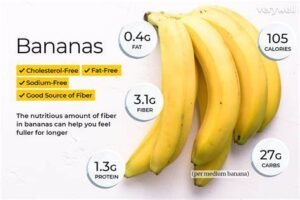Introduction to the Best Protein to Calorie Ratio
Many of us are under the impression that high-protein foods are invariably high in calories. However, that’s not always the case. If you’re looking to enhance your fitness regime or manage your weight more effectively, understanding which foods offer high protein without packing in too many calories can be a game changer. In this blog, we’re diving into the world of nutrition to spotlight the top ten foods that boast the best protein to calorie ratio. So, whether you’re trying to build muscle, lose weight, or simply eat healthier, this list is going to be your new go-to guide.
Click to see another blog of Protein
Decoding the Best Protein to Calorie Ratios
When we talk about the ‘protein to calorie ratio,’ we’re measuring how much protein you can get for the least amount of calories. This ratio is crucial for anyone looking to optimize their nutrient intake without overdoing it on the calorie front—essential for those tracking their intake for weight loss or muscle building.
Why is this ratio important?
Maintaining a high protein intake while controlling calorie consumption is key to achieving several health goals. For those on a weight loss journey, a higher protein to calorie ratio means you can feel fuller longer on fewer calories. For athletes and bodybuilders, it ensures that muscle repair and growth are maximized without excessive calorie intake that could lead to fat gain.
How to calculate protein to calorie ratio:
To put it simply, you calculate the amount of protein per serving and divide it by the total calories per serving. For instance, if a chicken breast provides 25 grams of protein and has 130 calories, the protein to calorie ratio is roughly 0.19. This simple calculation helps you compare different foods on how efficiently they deliver protein relative to their calorie content.
Incorporating foods with a favorable protein to calorie ratio into your diet isn’t just about picking the right snacks or ingredients; it’s about making smarter, more informed choices that align with your dietary goals. Whether you’re trying to slim down, bulk up, or maintain a healthy balance, understanding and utilizing the protein to calorie ratio can help you navigate your nutritional journey with more precision.
Click to see an other blog of Protien
Benefits of the Optimal Protein to Calorie Ratio
Contrary to popular belief, eating foods high in protein doesn’t have to mean consuming a lot of calories. In fact, when you choose foods with a high protein to calorie ratio, you’re setting the stage for a multitude of health benefits that can transform your overall well-being.
Weight Management:
One of the biggest advantages of maintaining a high protein, low-calorie diet is effective weight management. Protein is satiating, which means it can help you feel fuller for longer. This is crucial for avoiding overeating and snacking on high-calorie foods. Foods with a good protein to calorie ratio can help maintain lean muscle mass while promoting fat loss, making them a top choice for those looking to shape up or slim down.
Muscle Growth and Repair:
For the fitness enthusiasts and bodybuilders out there, getting enough protein is non-negotiable. Protein is the building block of muscle, and when paired with regular exercise, foods high in protein with fewer calories can aid in faster muscle recovery and growth. This is especially beneficial for those looking to enhance their physical performance without the calorie surplus that can lead to unwanted weight gain.
Enhanced Metabolic Health:
Incorporating high-protein, low-calorie foods into your diet can also boost your metabolism. This happens because your body uses more energy to digest protein compared to fats and carbohydrates—a phenomenon known as the thermic effect of food. An efficient metabolism can help in burning more calories throughout the day, even when you’re at rest.
Top Foods for the Best Protein to Calorie Ratio
Now that we know the benefits, let’s dive into the best foods that offer high protein for minimal calories. These foods are not only nutritious but also versatile, making them easy to incorporate into any meal plan.
Click to see an other blog of Protien
1. Chicken Breast:
The poster child for high-protein, low-calorie foods, skinless chicken breast is a staple in healthy diets. It’s perfect for building muscle without the calorie load, making it ideal for weight management.
2. Greek Yogurt:
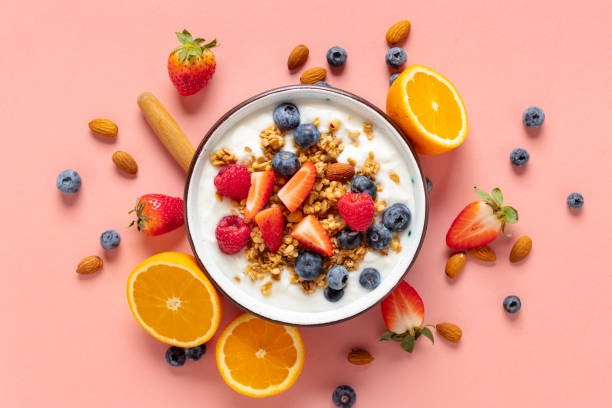
Packed with protein and surprisingly low in calories, Greek yogurt is a fantastic breakfast option or a healthy snack. It also includes probiotics that help in maintaining gut health.
3. Tuna:

Lean and mean, tuna is a powerhouse of protein with very few calories. It’s also rich in omega-3 fatty acids, which are great for heart health.
4. Cottage Cheese:

Low in fat and high in protein, cottage cheese is another excellent dairy option that can be enjoyed in various ways, from salads to smoothies.
5. Eggs:
Eggs are incredibly nutrient-dense, offering a high amount of protein relative to their calorie content. They are also one of the few natural sources of vitamin D.
6. Lentils:
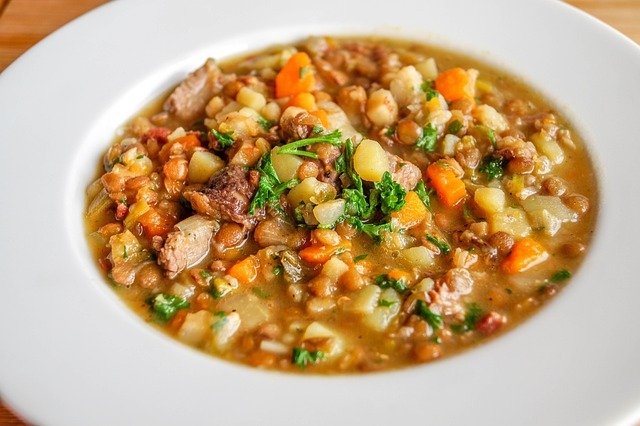
For those following a plant-based diet, lentils are a high-protein, low-calorie option that also provides fiber, iron, and magnesium.
7. Lean Beef:
Lean cuts of beef are rich in protein, zinc, iron, and B vitamins, all while being lower in calories, making them great for muscle building and repair.
8. Shrimp:
Shrimp is not only low in calories but also high in protein and incredibly easy to prepare. It’s also a good source of antioxidants.
9. Turkey Breast:
Similar to chicken, turkey breast offers high protein with minimal calories. It’s also low in fat and high in selenium.
10. Cod:
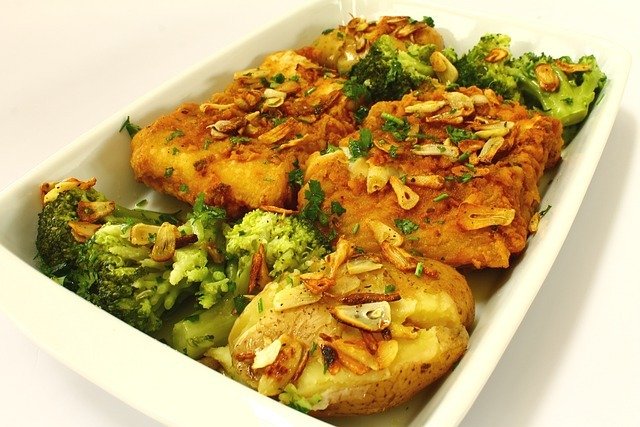
Cod is a white fish that is not only low in fat but also high in protein, making it an excellent choice for those looking to maintain a healthy protein intake without overdoing the calories.
Including these foods in your diet can help you achieve a healthier lifestyle while keeping your calorie intake in check. Each of these options offers a unique blend of nutrients and benefits, making them indispensable for anyone focused on enhancing their health through diet.
Diet Comparison: Best Protein to Calorie Ratios
It’s a common misconception that a high-protein diet is synonymous with a high-calorie intake. However, different dietary philosophies balance protein and calories uniquely, catering to varied health goals and lifestyle preferences. Let’s compare how some popular diets manage protein to calorie ratios:
Ketogenic Diet:
The keto diet emphasizes fats over carbs but it’s also critical to manage protein intake. Typically, protein is moderate to maintain ketosis without adding excess calories. Foods like fatty fish and lean meats are staples.
Vegan Diet:
Many assume vegan diets lack sufficient protein, but many plant-based sources efficiently provide protein without excessive calories. Foods like lentils, tofu, and tempeh are excellent for maintaining a good protein to calorie ratio in a vegan diet.
Paleo Diet:
Focusing on whole foods, the Paleo diet includes a higher intake of lean meats and fish, which are great sources of high-quality protein with fewer calories. This diet eliminates processed foods, optimizing nutrient density per calorie.
Mediterranean Diet:
Known for its balance and health benefits, the Mediterranean diet includes moderate protein from fish and legumes. It’s not just about the protein; the diet ensures every calorie is packed with nutrition.
Each diet has its approach to balancing protein and calories, showing that high protein doesn’t always mean high calories. Understanding these nuances can help tailor a diet plan that fits your health goals and dietary preferences.
Tips to Integrate High Protein to Calorie Foods in Your Diet
Incorporating foods with a high protein to calorie ratio isn’t just about choosing the right items; it’s about integrating them into your daily diet in a way that’s sustainable and enjoyable. Here are some practical tips:
Start with Breakfast:
Kick off your day with a protein-rich breakfast to boost satiety and energy levels. Try Greek yogurt with berries, or scramble eggs with spinach for a fulfilling start.
Smart Snacking:
Swap out calorie-dense snacks for protein-packed alternatives. Instead of chips, reach for a handful of almonds or a slice of turkey breast. These snacks keep you full longer without the calorie overload.
Creative Cooking:
Incorporate protein-rich foods like chicken breast or lentils into your meals in creative ways. Use spices and herbs to enhance flavors without adding extra calories.
Plan Your Meals:
Meal planning is crucial for maintaining a good protein to calorie ratio. Plan your meals around protein sources, adding vegetables and healthy fats to balance the meal.
Track Your Intake:
Keeping a food diary can help you monitor your protein and calorie intake, ensuring you’re on track with your dietary goals. Apps and tools are available to simplify this process.
By following these tips, you can easily incorporate high-protein, low-calorie foods into your diet, helping you manage weight, build muscle, and improve overall health. Whether you’re vegan, keto, or simply trying to eat healthier, these strategies are adaptable to any diet plan.
How to Calculate Your Best Protein to Calorie Ratio
A lot of people think tracking food intake is all about counting calories, but for those focused on a healthy lifestyle, understanding the protein to calorie ratio of your food can be just as important. Here’s how to get started with tracking and calculating this vital ratio:
Understand the Basics:
First, you need to know the protein content (in grams) and the total calories of the food item. This information can often be found on food labels or through various food tracking apps.
Use the Right Tools:
Utilize apps and websites designed for nutritional tracking. These tools make it easier to log your daily food intake and automatically calculate the protein to calorie ratio for you. Popular options include MyFitnessPal, Cronometer, and Nutrient Optimiser.
Calculate Manually:
To calculate the ratio manually, divide the grams of protein by the total number of calories per serving, then multiply by 100 to get the percentage. For example, if a chicken breast has 25 grams of protein and 130 calories, your calculation would be (25/130)*100, which gives approximately 19%. This number tells you that 19% of the calories come from protein.
Regular Monitoring:
Make tracking a regular part of your routine. This not only helps in managing your diet but also in understanding how different foods contribute to your overall nutritional goals.
By making these calculations a regular part of your diet management, you can optimize your intake based on your specific health and fitness goals, whether it’s losing weight, building muscle, or maintaining overall health.
Avoiding Common Mistakes with Protein to Calorie Ratios
While managing your protein and calorie intake can lead to significant health benefits, there are common pitfalls you should be aware of to make the most out of your nutritional efforts:
Overestimating Protein Needs:
It’s a frequent error to think more protein is always better. The body can only utilize a certain amount of protein; the excess can turn into calories, possibly leading to weight gain.
Ignoring Overall Nutritional Balance:
Focusing solely on protein and calories can lead to neglecting other essential nutrients like fiber, vitamins, and minerals. Ensure your diet is well-rounded to include all necessary nutrients.
Not Reading Labels Carefully:
Many people overlook the importance of reading food labels for serving size and nutritional content, which can lead to inaccurate tracking of intake.
Skipping Variety:
Eating the same protein sources repeatedly can lead to nutritional deficiencies and boredom. Try to include a variety of protein sources to cover a broad spectrum of amino acids and nutrients.
Forgetting About Preparation Methods:
The way food is prepared can significantly affect its nutritional content. For instance, frying adds extra calories that could skew your protein to calorie ratio.
By avoiding these common mistakes and adopting a methodical approach to tracking your protein and calorie intake, you can enhance the effectiveness of your diet and ensure it supports your health and fitness goals comprehensively.
Final Thoughts on Achieving the Best Protein to Calorie Ratio
As we conclude our exploration into the relationship between protein and calorie ratios, it’s clear that the right balance can significantly enhance your health and fitness goals. This balance isn’t just about reducing calorie intake or increasing protein; it’s about making informed choices that contribute to a healthier, more balanced lifestyle.
Pros
Throughout our discussion, we’ve highlighted the importance of choosing foods with the best protein to calorie ratio. These choices can help manage weight, support muscle growth, and enhance metabolic health without the need for drastic dietary changes. The inclusion of foods like chicken breast, Greek yogurt, and lentils, among others, ensures that you can enjoy a variety of tasty options while maintaining this balance.
Cons
However, as beneficial as a high protein to calorie ratio can be, there are potential drawbacks to consider. Overemphasis on protein at the expense of other nutrients can lead to an unbalanced diet, potentially missing out on essential vitamins and minerals. It’s also possible to consume too much protein, which in excess can lead to kidney strain and other health issues in susceptible individuals.
Final verdict
In conclusion, while maintaining a high protein to calorie ratio can be a powerful tool for achieving specific health and fitness objectives, it should be approached with a balanced perspective. Incorporating a variety of protein sources, paying attention to overall nutritional content, and adjusting intake based on personal health conditions and activity levels are crucial steps in utilizing this dietary strategy effectively.
Ultimately, the verdict on maintaining an optimal protein to calorie ratio is overwhelmingly positive when managed wisely. It’s a strategy that offers flexibility and benefits for anyone looking to improve their dietary habits, supporting both immediate health goals and long-term wellness.
Frequently Asked Questions About Protein to Calorie Ratios
What is a protein to calorie ratio? It’s a way to measure how much protein you get compared to the number of calories in a food item. This ratio is key for anyone trying to manage their weight, build muscle, or maintain a balanced diet without consuming too many calories.
Why is the protein to calorie ratio important? This ratio helps you maximize your intake of protein, essential for muscle repair and growth, without overloading on calories. It’s especially useful for those looking to lose weight or maintain a lean body composition.
How do I calculate the protein to calorie ratio? To calculate this ratio, divide the grams of protein in a serving by the total calories in that serving. For example, if a food has 10 grams of protein and 100 calories, the ratio would be 10/100, which simplifies to 0.1 or 10%. This means 10% of the calories come from protein.
Can I follow a high protein to calorie diet on a vegan regimen? Absolutely! There are plenty of plant-based foods with excellent protein to calorie ratios. Foods like lentils, chickpeas, tofu, and tempeh are great sources of protein that don’t pack too many calories.
What are some common mistakes to avoid when focusing on protein to calorie ratios? One common mistake is focusing too much on protein at the expense of other nutrients. It’s important to maintain a balanced diet. Also, don’t overlook the importance of food preparation; cooking methods like frying can add extra calories that might disrupt your desired ratio.
How often should I track my protein and calorie intake? It depends on your health and fitness goals. If you’re trying to lose weight or build muscle, regular tracking can help you stay on course. Otherwise, periodic checks might be sufficient to ensure you’re balancing your intake.
Is there such a thing as too much protein? Yes, consuming too much protein, especially without enough hydration, can put stress on your kidneys. It’s important to balance protein intake with your overall diet and hydration levels to avoid potential health issues.


